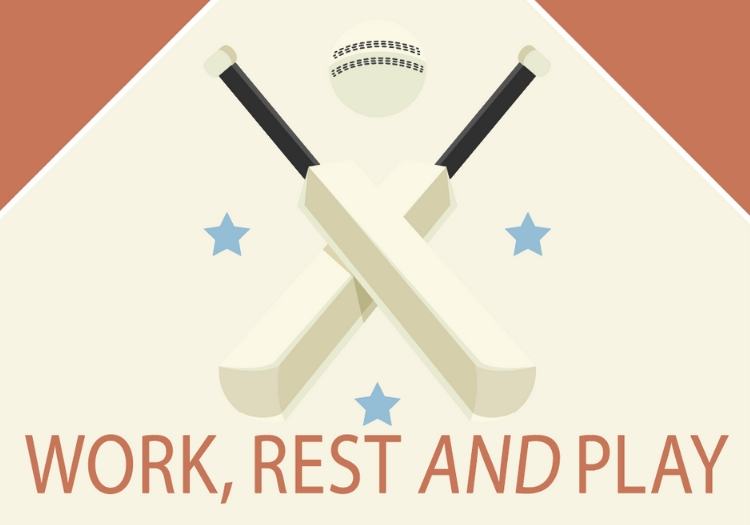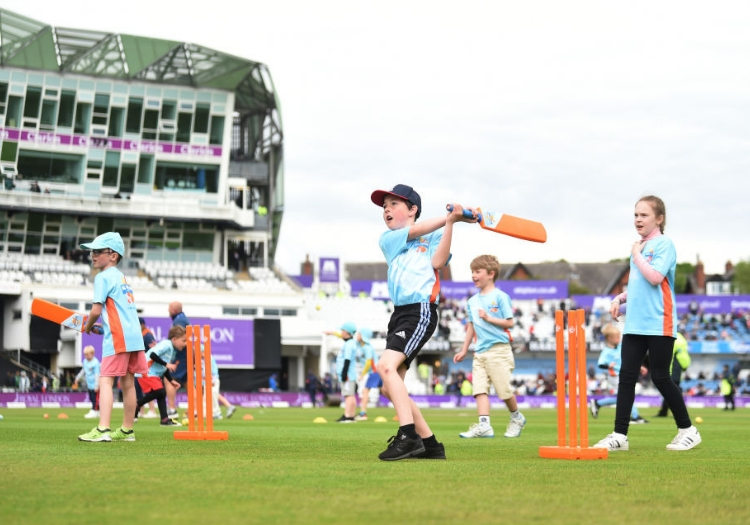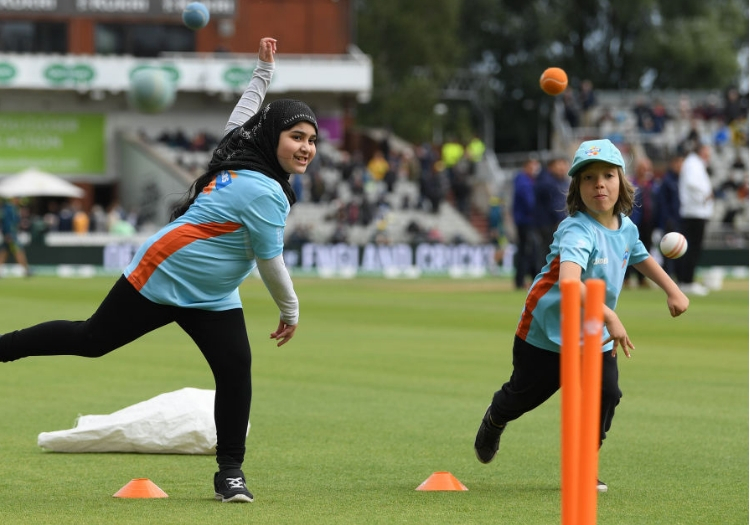DOUGLAS HENDERSON analyses why things have gone wrong, specifically in the state sector, and pitches some remedies...


• Lack of out-of-hours cricket dates back to 1974
• A change in the academic year, from January to December, would help
• Pupils cannot study all the time – they need cricket
It is no wonder that cricket in state schools has been struggling in recent years. Even in independent schools, the traditional stronghold of the game with outstanding facilities, much superb coaching and up to 20 teams turning out for competitive matches every Saturday and some weekdays, it has become almost an impossible task to keep the game going. This is entirely due to the absurd pressures of the public exam system, which seems to be accountable to nobody. More of that later.
For this article we need to define state schools. Especially in recent years we have had an extension of types of ‘state’ school, for example academies. However, as shorthand I shall use ‘independent schools’ to mean the schools whose heads are members of the Headmasters’ Conference Schools organisation; in practice almost all independent schools of any standing.
State of play: Why is cricket struggling to make its voice heard in state secondary schools?
Almost all, incidentally, are non-profit-making, which will be a surprise to many. ‘State schools’ covers every non-HMC institution: comprehensives, grammar schools, sixth-form colleges, academies and others. Some of these in recent years have specialised in attracting good cricketers by close links with (cricket) county academies and good local clubs and whose cricket is often run by former first-class cricketers (as is very widely the case in HMC schools).
Public policy often has difficulties with the ‘law of unintended consequences’ and in my view the Houghton Report of 1974 and its aftermath is a classic example. There was agitation among teachers for higher salaries and this report did indeed give teachers a substantial pay rise. Unfortunately it tacked on the disastrous bit: in return (as it were) it laid down rather too precisely the number of hours that teachers were expected to work.
You can guess the consequence: teachers in state schools who had formerly given up countless hours in (say) coaching cricket unpaid – still the norm in independent schools, incidentally – in effect said: “OK, stuff it. I’ll go and tend my vegetables instead.” That, for my money, is where cricket in state schools all went wrong. Sadly, they would not now be tending vegetables. They would be writing their own text-books (printed ones by experts seem to be frowned on), dealing with mounds of pointless paperwork, and responding to pestering parents’ emails.
"Essentially cricket is not a sport which lends itself easily to a 40-minute session with 30 children of very mixed ability"
Other factors were also at work: the 1960s zeitgeist was very much anti-competition and anti-elitism. We even had the hilarious spectacle of sports days where it was decreed from on high (ironically) that all ‘competitors’ had to hold hands at the end of a race so that everybody was a winner.
Self-esteem (however unearned) was king. Endless speech-day speeches told us that education comes from the Latin “educare” to mean ‘drawing out’ (it doesn’t; drawing out from “educere” would be eduction. “Educare” meant something closer to training!). The idea of actually ‘teaching’ was anathema; children themselves were the repository of wisdom and adults needed to learn from them, and so on. You can read more of the idiocies of the time in the excellent Melanie Phillips’s book, All Must Have Prizes.
By the 1970s, there were strongholds of teaching training in PE such as Loughborough and St Luke’s and they encouraged their graduates to press for ‘professionalism’ in sports and PE. One such graduate (an England rugby international) told me he thought that much of cricket coaching should be done by his (three) PE staff. One was a professional boxer of distinction and I said I wanted him nowhere near the forward defensive, brilliant though he was as a boxing coach.
Essentially, cricket is not a sport which easily lends itself to a 40-minute session with 30 children of very mixed ability. To be successful in your cricket programme it has to be done beyond the timetable, as in all independent schools. Before the abolition of all direct-grant schools and most grammar schools, these institutions followed the model of independent schools with a wide-ranging extra-curricular (now co-curricular) programme of sports, drama, music and all sorts of other activities. Time is partly the problem. The independent school day doesn’t normally end until about 6pm or 7pm (not to mention homework or ‘prep’), whereas the state school day normally ends at about 4pm, if that.

All Stars is good at enthusing youngsters but does it produce the elite skills?
Not only that, but to be good at cricket takes a great deal of time and usually a considerable amount of skilled coaching. That means that a school really needs several people who are keen on the game, are knowledgeable about it, and preferably have played it to a high standard. In short, cricket cannot really be part of a standard PE programme using lesson time; at least not to reach a high standard.
Chance to Shine has done outstanding work in enthusing young people about the game but it has not so far become a programme for developing good cricketers even at club level (at least, until they reach the clubs themselves). Clubs themselves are simply people who usually have a full-time job, so the amount of time they can give to coaching the young is distinctly limited.
Other things like Kwik Cricket and All Stars Cricket have done the same in enthusing and developing cricketing skills such as catching and fielding but are unlikely to produce the Cowdreys and Bothams of the future. Nearer the mark recently have been the MCC’s ‘cricketing hubs’, who use the outstanding facilities at (mostly) independent schools and bring in skilled coaches for promising players.
Which brings us to public exams. This is where things become more apocalyptic and this is definitely not ‘Project Fear’. Unless things get markedly better very soon, probably with a radical solution (see below), the game is likely to die in all schools completely; at best become a tiny minority sport like real tennis or rackets.
Unfortunately at the moment the prospect is for matters to get even worse. In February this year it was mooted in The Times and strongly supported in correspondence that university entrance should be conducted after results are known. Of course. The only problem is that the current suggestion is therefore to move public exams (A2 anyway) even earlier.
"Parents and teachers who refuse to let pupils play sport are doing them a disservice. They are making their results worse. They need cricket"
The summer term is already virtually non-existent what with exams in early May, preceded by ‘reading weeks’ and followed by ‘exam-stress exeats’ not to mention half-terms. Even earlier exams would kill off cricket at a stroke if there are no players to turn out, at senior level anyway.
The university entrance system has always been preposterous with the whole rigmarole of predicted grades, conditional offers or nowadays being superseded in the competition for students by lots of unconditional offers (cue pupils slacking off completely; why can’t people see that?). Schools don’t want the discipline problems of their pupils hanging around with no incentive so they’ll probably all be sent home, even more so than they are at present.
My solution for nearly 40 years has been the same: change the school year so that everybody from five to 18 starts in January and leaves school in December, like most other countries (I think). The school year has always been held hostage by the need to mark exams for those going to university between the end of the school year and the start of the university term.
It has become almost impossible with the huge growth in the number of universities themselves, the numbers of young people attending and so on. Once you are rid of the frenzy just for one year-group (in fact, still only 50 per cent of them), then exams can be marked at more leisure, and the whole process of university entrance can be done sensibly once results are known.

Playing cricket can relieve exam stress
That then frees up the school year for everybody to have a balanced year: not one hugely long autumn term, one middling-length winter/early spring term and a virtually non-existent late spring/early summer term. I would add that the churches are thinking of making Easter a fixed date but actually I think we should all ignore the date of Easter. If it falls within term-time, well, fine. Celebrate it if you want to (my school did so once, and it was wonderful).
And finally a word about preparing for exams. I do know something about this because for many years I addressed both the A Level (as it was then) and GCSE whole year-groups with a 45-minute talk just before the Easter holiday. Not just my own prejudices but from reading quite widely on the topic.
Of all the reading I did, the most persuasive, interesting and indeed readable book was a little Pelican (which I have in front of me) called The Psychology of Study by professor (of psychology) CA Mace. It cost me £1 (in a second-hand bookshop – I’m not that old) and was published in 1932 and my edition was a re-print in 1969.
One very strong point was that in revising you need, above all, variety. Variety of subject (or even within it) and variety of activity. Our brains cannot cope with doing nothing but revise until our eyeballs go round in circles. It is actually counter-productive because they sort of go on strike. To quote Mace: “In normal work there should be regular steady spells of activity at a reasonable level of effort separated by equally regular spells of rest and recreation.
A rough general rule for the avoidance of undue fatigue may be stated in the following terms. Some form of relaxation should be taken for a few consecutive minutes in every hour; work should cease for two or three consecutive hours in every day; one complete day of rest and recreation should be reserved in every week.”
So those parents and teachers who refuse to let pupils play sport or anything else are doing them a disservice. They are making their results worse. They need cricket.
Douglas Henderson was master in charge of cricket at Clifton College between 1970 and 2003, with a brief gap (1988–1993). After retirement he was the schools cricket correspondent for The Times until 2009. He is now editor of Schools Cricket Online, secretary to the cricket committee of HMC Schools Masters i/c and the compiler of the schools section of Wisden Cricketers’ Almanack
Subscribe to The Cricketer this Christmas and receive a £20 John Lewis voucher or Alastair Cook's autobiography. Claim your free gift here
Subscribe to The Cricketer for exclusive content every day: The inside track on England's Test tour with George Dobell in Pakistan, award-winning analysis, breaking news and interviews and the only place for in-depth county coverage all year round. Plus: An ad-free app experience at your fingertips. Subscribe to thecricketer.com today for just £1.